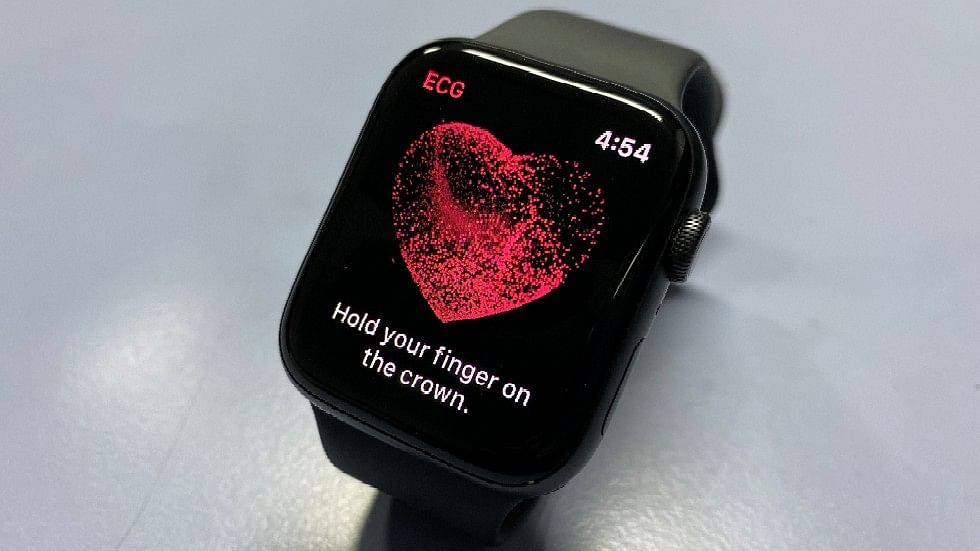
ECG app on Apple Watch Series 5
Credit: DH Photo/Rohit KVN
In 2019, Apple in collaboration with researchers from Harvard and Brigham & Women’s Hospital started the Apple Heart and Movement Study and the Apple Women’s Health Study.
Now, the research study come up with insightful data that the Apple Watch can help with managing the health of people with diabetes.
Apple Watch comes with advanced body vital trackings such as heart rate variability, physical activity tracking, menstrual cycle monitoring capability, sleep pattern tracker and more to people understand their body fitness and if required do coarse corrections to lead a healthy lifestyle.
In the study, as participants increased either the average duration of exercise or the average number of steps taken on a given day, there was a corresponding increase in the average percentage of time glucose fell within the target range of 70-180 mg/dL.
[Note: A fasting blood sugar level of 99 mg/dL or lower is normal, 100 to 125 mg/dL indicates you have prediabetes, and 126 mg/dL or higher indicates you have diabetes. And, a blood sugar level of less than 140 mg/dL (7.8 mmol/L) is considered normal for someone with diabetes]
And, analyses of glucose levels across 1,982 menstrual cycles, showed a slight increase in time spent within the target range of 70-180 mg/dL during the follicular phase when progesterone levels are lower (68.5% of the day) compared to the luteal phase (66.8% of day).
"The connection between the menstrual cycle, glucose levels, and insulin sensitivity, influenced by hormones such as estrogen and progesterone, is noted in our preliminary findings. This preliminary analysis may pave the way for a more in-depth examination of the relationship between menstrual cycle phases and glucose levels, offering potential implications for diabetes management," said Shruthi Mahalingaiah, MD, MS, FACOG, assistant professor of environmental, reproductive, and women’s health at the Harvard T.H. Chan School of Public Health.
Dr. Mahalingaiah is the co-principal investigator of the Apple Women’s Health Study.
Early detection of diabetes and intensive glucose management including tracking of biological vitals, can reduce the risk and related health complications of the person.
"Empowering users to move their personal physiology in the right direction is a fundamental foundation of precision health and medicine. Apple Watch enables users to determine how best to improve their cardiometabolic risk. These data demonstrate that exercising at the right levels can improve how each of us deals with metabolic challenges to reduce the risk of diabetes or to improve the control of diabetes if it does develop. It is exciting to see that the integration of exercise and CGM data using Apple HealthKit enables users to improve their glucose control and reduce their risk of future heart disease," said Calum MacRae, M.D., Ph.D., a cardiologist, Professor of Medicine at Harvard Medical School, and principal investigator of the Apple Heart and Movement Study at Brigham and Women’s Hospital.
Apple Watch supports third-party apps for glucose level tracking. Here are some of the reliable apps you should check out:
1) Glucose Blood Sugar Tracker:
2) Diabetes Logs
3) mySugr - Diabetes Tracker Log
4) OneTouch Reveal app
5) Glucose tracker++
Get the latest news on new launches, gadget reviews, apps, cybersecurity, and more on personal technology only on DH Tech